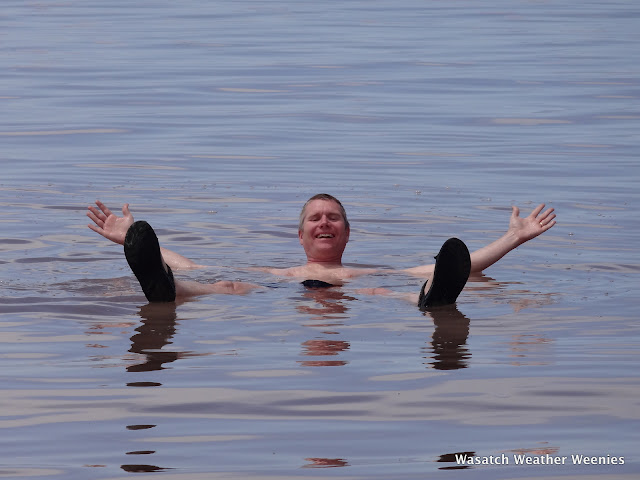A quick-and-dirty way to forecast summertime maximum temperatures in Salt Lake City during situations where there are gradual changes in the airmass is to simply adjust the forecast based on the model-predicted temperature change at 700-mb.
Here's how it works. Let's start with yesterday's observed 700-mb and maximum temperatures at the Salt Lake City airport.
5 PM 700-mb temperature: 13.8ºC/56.8ºF
Maximum temperature: 34.4ºC/94ºF
Differential: 20.6ºC/37.2ºF
Next, take the model late afternoon 700-mb temperature forecasts for the next few days and estimate the maximum temperature based on the differential above.
Thursday (today):
NAM 700-mb temperature: 16.6ºC
Estimated Max temperature: 37.2ºC/99.0ºF
GFS 700-mb temperature: 17.4ºC
Estimated Max temperature 38ºC/100.4ºF
Friday:
NAM 700-mb temperature: 17.9ºC
Estimated Max temperature: 38.5ºC/101.3ºF
GFS 700-mb temperature: 18.3ºC
Estimated Max temperature: 38.9ºC/102.0ºF
Saturday:
NAM 700-mb temperature: 19.5ºC
Estimated Max temperature: 40.1ºC/104.2ºF
GFS 700-mb temperature: 19.4ºC
Estimated Max temperature: 40.0ºC/104.0ºF
Sunday:
No NAM forecast available
GFS 700-mb temperature: 19.3ºC
Estimated Max temperature: 39.9ºC/103.8ºF
There are some permutations to this approach. One is to adjust based on the average differential over several days rather than just one. This works well if you've been in a fairly persistent pattern as it smooths out some of the spikiness that exists in temperature observations. Another is to account for the model bias. Most models have a small bias (e.g., model A tends to be a bit too warm) and it can be helpful to correct for this too, if it is known (often, it isn't, as the weather is quite variable so you don't always know the bias for a specific situation). Those willing to write code can use a Kalman Filter or other statistical approaches to do these sorts of adjustments in automated fashion.
The pitfall to the quick-and-dirty approach above is that even though the large-scale airmass might not be changing much, small variations in the weather could play a role. For instance, there could be a subtle flow shift that occurs so that the Great Salt Lake has a greater influence on the maximum temperature than it has had previously. Or, just enough moisture creeps in that convection begins to pop up.
In any event, it appears nuclear summer is here. Heading for high ground is recommended. I'm actually going to lower ground—Juneau, Alaska. Forecast high for today: 59ºF. So long suckers....











































